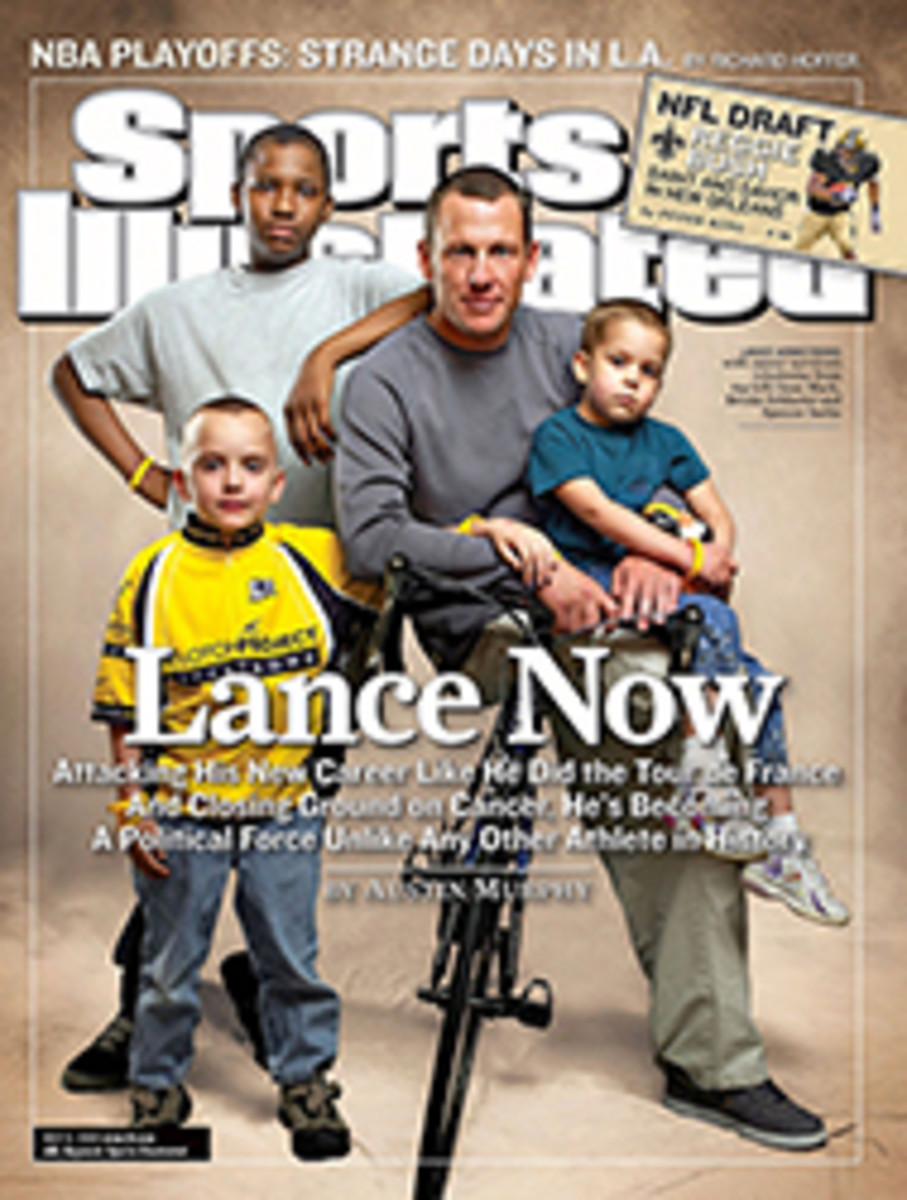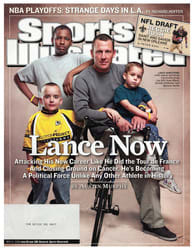
Deadly Accurate
Walking a golfcourse with Roberta Isleib can be scary, especially if you're strolling herhome course, Madison (Conn.) Country Club on Long Island Sound. Isleib hasplanted three bodies--dead bodies--at Madison. There's one beneath the sand inthe bunker off the 10th fairway, another in the marsh grass behind the 9th teeand a third in a bunker on 17. In fact, Isleib has done so muchcorpse-littering at Madison and other golf locales that she gives new meaningto the phrase knocking it stiff. ¶ But Isleib, a licensed clinicalpsychologist, has a grip on her homicidal tendencies. She is the creator of anengaging, soft-boiled series of golf-themed mystery novels, making her the rarefemale in a mostly male discipline.
Isleib's mostrecent novel, Final Fore, is typical. Final Fore is the fifth and, for now,final adventure of LPGA tour pro Cassie Burdette. In her late 20s Cassie hasqualified for the U.S. Women's Open, and Titleist is considering a sponsorshipdeal for her. But Cassie is a little too acerbic and inquisitive for her owngood, and trouble finds her like a sliced tee shot finds the woods. Not onlydoes she have problems with her boyfriend, her parents and her caddie, but sheis also the recipient of threatening e-mails. Then, on the eve of the Open, acompetitor is poisoned and found dead. Cassie's not a suspect, but with allthis going on, how's she supposed to focus on golf?
Isleib, 53,introduced Cassie in Six Strokes Under--an Agatha Award nominee for best firstmystery novel--in 2002, a dozen years after she fell for a man who was in lovewith golf. The game connected with Isleib's psychological sweet spot."There's something about golf that cuts loose what people don't usuallyshow about themselves," she says. Isleib picked up the game's scent,detouring from the life path she had created. How Isleib evolved from atennis-playing therapist at Yale to a certifiable golf nut playing mind gamesin print is, if not a complete mystery, a heck of plot twist.
Golf and murderhave a long literary history. Sherlock Holmes knew the game. Agatha Christiemucked around in the sport in two novels. Rex Stout raised the curtain on NeroWolfe by lowering the boom on a victim on the golf course. Ian Fleming, E.C.Bentley, Elizabeth Daly, James Ellroy, Harlan Coben and Pete Dexter are amongthe mainstays of mayhem who've woven golf into their plots, while James Y.Bartlett, Conor Daly, Malcolm Hammer, John Logue, Keith Miles and thehusband-and-wife team of Aaron and Charlotte Elkins have all found enoughintrigue in the game for continuing series and characters. "Golf's pacelends itself to narrative," says Don Wade, whose scorecard of golf booksincludes the mystery Take Dead Aim. "There's time for stuff tohappen."
Golf is aplausible stage. The rich and powerful play the game, as do regular Joes. So dowriters, who supposedly write what they know. Golfers as a demographic are alsobetter educated than the public at large, and therefore they arereaders--hence, a built-in audience. But even the most golf-addled readers needmore than bogeys and birdies to propel them from page to page. The plot mustexpand beyond the fairway. "No one's interested in shot-by-shot detailsexcept maybe your partner in the member-guest," Isleib says. True, readersfollow Cassie through Q school (Six Strokes, 2002) to the ShopRite LPGA Classic(A Buried Lie, 2003) to servitude as an assistant club pro when she loses hertour card (Putt to Death, 2004) to Pinehurst for a Silly Season event (Fairwayto Heaven, 2005) and finally to the U.S. Women's Open. Along the way Isleibtouches on golf-related issues such as nonconforming clubs, gender equity,women in men's events and slow play. But her mysteries also delve into moregeneral topics such as community development, pharmaceutical research, theenvironment and family dynamics.
Chapter 1 ofIsleib's golf-mystery writing began the day she met John Brady at a tennisevent for singles--both were divorced--in 1990 and he asked her for a date.They married two years later. Isleib had grown up in northern New Jersey andwas in the third class of female undergraduates at Princeton, where she earneda degree in French literature in '75, before getting a masters in vocationalrehabilitation from Tennessee in '78 and a doctorate in clinical psychology atFlorida in '85. She then served a two-year internship at Yale. Isleib stayed atthe university as a therapist and eventually opened a private practice outsideNew Haven specializing in, she says, "the good old-fashioned psychodynamicsthat examine past history to shed light on current problems."
Brady is aserious golfer. He grew up playing the game, carried a single-digit handicapand had joined Madison Country Club not long before meeting Isleib. A fewmonths after their first date he took her to a driving range and handed her aclub. "She was an instant fanatic," he says.
"It was sucha challenge," Isleib says. "I took it seriously from thestart."
The first timeshe teed it up on a real course, Isleib needed 10 strokes to advance the ball150 yards, but then jarred her 11th shot from 60 yards out. She immersedherself in the game, reading and taking lessons. Before long she had an 18handicap and was entering state women's tournaments. "I was always the lastperson off the tee," Isleib says, "because I was the worst player withthe gall to enter."
Given how herunderstanding of the mind outdistanced her tee shots, Isleib soon concludedthat she had something useful to offer other women golfers."Psychologically, golf is such an interesting mystery," she says. Soshe took a stab at freelancing psychological how-to articles, and by the late'90s her work was popping up in magazines such as Golf for Women. She attendedworkshops and seminars, and joined a writers' group. Everything she wrote wasedited by Brady, a business-to-business publisher. Still, Isleib wasfrustrated. "It was a bear to get things into print," she says. Then afriend from grad school, with whom Isleib had been exchanging mystery novelsfor years, suggested that she write one. Cassie emerged a few weeks later.
That golf wouldseep into the storytelling was a gimme. Isleib was exploring her own issueswith the game, from the status of women to the pressure of competition. Herprofession, though, was the bedrock: The more she wrote, the more she foundparallels between unraveling a psyche and unraveling a crime. "Both presentpuzzles," she says. "In one the symptom might be depression. In theother it's murder. Both require exploration. In mysteries the loose ends gettied up and the bad guys get punished. Good therapy can feel likethat."
The trouble was,her initial attempt wasn't very good and it went unpublished. Other thanintroducing a group of layered characters that would ultimately survive, Isleibacknowledges, it misfired. "I barely had two suspects," she says.Moreover, Cassie was avoiding testing her own game and, improbably, wascaddying. Isleib's own research should have raised a red flag. She hadpersuaded her swing coach, Don Gliha, to let her caddie for him at the 1999Connecticut Open. "It was strenuous," he says--for him. "I carriedthe bag myself the last three holes," Gliha recalls. "At least I didn'thave to carry Roberta too."
Nevertheless, thebook's characters showed enough promise to earn Isleib a three-book deal in2001--later renewed for two more--from the Berkley Publishing Group."Roberta was so good at balancing action with introspection," saysCindy Hwang, Isleib's editor. Hwang had concerns about the market for afemale-centered golf mystery, but the potential won her over. "Roberta hada terrific voice, and I could see the complex layers of Cassie's psyche,"says Hwang. "She was up-front about [Cassie's] issues," which haveincluded excessive drinking, a complex family, an equally complicated lovelife, career conflicts, on-and-off therapy and an inability to let go when shestumbles onto a murder.
To research ABuried Lie, Isleib bought a spot in the pro-am before the 2001 ShopRite Classicand was paired with Lisa Hackney, the 1997 LPGA rookie of the year. Isleibdoesn't remember how they finished but recalls that Hackney was intrigued byIsleib's project and her main character. For every question Isleib askedHackney, the young pro had one about Cassie. What's her game like? Does shegamble? Where does she stay on the road?
Not surprisingly,Isleib's books have a following on the LPGA tour. "The golf feelsright," says Donna Andrews, who served as Isleib's resident expert onPinehurst for Fairway to Heaven, "and Cassie rings true as a strugglingplayer, though we try not to get involved in murders."
No one had toprovide inside information for Putt to Death. Isleib set the book at a coursemuch like Madison and based parts of it on her own sometimes unsettlingexperiences as chairperson of the club's greens committee from 2000 through'04. As greens chair, she attempted to have Madison certified as anenvironmentally friendly Audubon course. "I don't mind brown patches,"she says. "I learned that most people do."
Says Brady,"Roberta thought Audubon would be a slam dunk. She was naive. She simplycouldn't understand [the] opposition."
Says MikeChrzanowski, Madison's course superintendent, "A select group of guys madeit clear that a male could do a better job than she could, but Roberta didn'ttake any flak from anybody."
Mystery writersdon't have to. They always have the last word. "After I got over being sopissed off," says Isleib, "I channeled my anger in useful ways."Like literarily killing off a few of her naysayers at the club.
Putt to Death isfilled with dialogue straight from committee meetings, and some of the doomedcharacters are recognizable. "When anybody asks, I tell them it'sfiction," Isleib says. Adds Brady, "She could have bashed them worsethan she did, but we have to live in this town. I actually expected more griefthan we got."
Gliha relishedhis role as the teaching pro cleverly disguised as the teaching pro."Roberta obviously likes me," he says. "She let me have a briefaffair with one of the deceased."
While writingPutt to Death, Isleib realized that she liked creating problems more thanlistening to other people's. She gave up her day job to concentrate entirely onwriting. Yet for all the opportunity that Cassie has provided her, Isleib issetting aside the character for a while. After all, Cassie has made it to theOpen, is getting along with her father, has gotten rid of the troublesomeboyfriend and has her drinking under control. She is finally more securepsychologically and less conflicted as a competitor. "Personally, I'mexperiencing a mild feeling of loss," says Brady. "Cassie has becomequite real to us. I'd like to see where she could go."
Isleib does planto bring Cassie back someday. With so much attractive, youthful talent on theLPGA tour, there will be opportunities for her. Besides, says Isleib, "Ilike her." Enough not to kill her off.
Isleib needed 10 strokes to advance the ball 150yards, but THEN JARRED HER 11TH SHOT FROM 60 YARDS OUT.
"Cassie rings true as a struggling player,"says Donna Andrews, "THOUGH WE TRY NOT TO GET INVOLVED IN MURDERS."
PHOTO
Photographs by Michael J. LeBrecht II/1Deuce3 Photography
 KILLERREEDS
Isleib hid a body in the marsh behind the 9th tee at her home course inMadison, Conn.
PHOTO
Photographs by Michael J. LeBrecht II/1Deuce3 Photography
 WRITER'S CAMP
After five novels about golf murders, Isleib has moved on from the game andbegun a new series of mysteries.
PHOTO
Photographs by Michael J. LeBrecht II/1Deuce3 Photography
 FIELDTRIPS
To research her books, Isleib has caddied in pro tournaments, attended Q schooland played in LPGA pro-ams.

